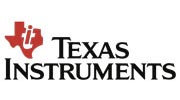Filter interviews by
Clear (1)
INVECAS Analog Layout Engineer Interview Questions and Answers
INVECAS Analog Layout Engineer Interview Experiences
1 interview found
Interview Questionnaire
4 Questions
- Q1. Operation of MOSFET.
- Ans.
MOSFET is a type of transistor that operates by controlling the flow of electrons through a semiconductor channel.
MOSFET stands for Metal-Oxide-Semiconductor Field-Effect Transistor.
It has three terminals: gate, source, and drain.
The gate terminal controls the flow of current between the source and drain terminals.
MOSFETs are commonly used in digital and analog circuits.
They can be used as switches or amplifiers.
MOSFET...
- Q2. Operation of FinFet.
- Ans.
FinFET is a type of transistor that has a fin-like structure instead of a planar one.
FinFET stands for Fin Field Effect Transistor.
It has a thin silicon fin that protrudes from the substrate, which acts as the channel for current flow.
The gate wraps around the fin on three sides, providing better control over the flow of current.
FinFETs are used in modern microprocessors and memory chips due to their low power consumpt...
- Q3. Matching Techniques
- Ans.
Matching techniques are used to ensure that two or more components in a circuit have the same electrical characteristics.
Matching can be achieved through layout symmetry, device sizing, and current density control.
Common matching techniques include resistor matching, capacitor matching, and transistor matching.
Matching is important for improving circuit performance and reducing noise.
Matching can be done at the device
- Q4. Layout Independent Effects
Skills evaluated in this interview
Top trending discussions






Interview questions from similar companies

I applied via Naukri.com and was interviewed before May 2020. There were 4 interview rounds.
Interview Questionnaire
1 Question
- Q1. Basics about Android application development
Interview Preparation Tips

(1 Question)
- Q1. Mixed signal design process
- Ans.
Mixed signal design process involves integrating analog and digital components on the same chip.
Mixed signal design combines analog and digital circuits on the same chip.
Careful consideration of noise, power consumption, and signal integrity is crucial.
Simulation tools like SPICE are used to verify the design before fabrication.
Mixed signal design requires expertise in both analog and digital design techniques.
(1 Question)
- Q1. Working model and salary


(1 Question)
- Q1. Reason for job change?
(3 Questions)
- Q1. Basic and advanced programming concepts
- Q2. Basic and advance of MCU
- Q3. Basic to advance of RTOS

(1 Question)
- Q1. Tell me about yourself

(1 Question)
- Q1. C language and project

(2 Questions)
- Q1. Design PAtterns
- Q2. Factory Pattern
(2 Questions)
- Q1. Why did you leave last company
- Ans.
Seeking new challenges and opportunities for growth.
Desire for new challenges and opportunities for growth
Company restructuring led to changes in job responsibilities
Seeking a more collaborative work environment
- Q2. Thoughts on LGBTQ community
- Ans.
Supportive and inclusive of LGBTQ community
Believe in equality and respect for all individuals regardless of sexual orientation or gender identity
Advocate for LGBTQ rights and support diversity in the workplace
Promote a safe and inclusive environment for LGBTQ individuals to thrive
Recognize the importance of representation and visibility for LGBTQ community

Senior Engineer Interview Questions & Answers
Happiest Minds Technologiesposted on 30 Apr 2022
I applied via Naukri.com and was interviewed in Oct 2021. There were 2 interview rounds.
(3 Questions)
- Q1. SCCM Background of old environment.
- Ans.
The old environment had a background in SCCM.
The old environment utilized SCCM for software deployment and updates.
SCCM was also used for inventory management and reporting.
The SCCM infrastructure was configured with multiple distribution points for efficient content delivery.
The old environment may have had custom scripts or packages created for specific software deployments.
SCCM was likely integrated with Active Dire
- Q2. Patching process of old env.
- Ans.
Patching old env involves identifying vulnerabilities, prioritizing patches, testing, and deploying.
Identify vulnerabilities in the old environment
Prioritize patches based on severity and impact
Test patches in a non-production environment before deploying
Deploy patches during scheduled maintenance windows
Monitor the environment for any issues post-patching
- Q3. OSD Introduction and OSD troubleshooting basic
(1 Question)
- Q1. Boot image basic level questions
Interview Preparation Tips
- SCCM
Skills evaluated in this interview

(1 Question)
- Q1. 1. CLouse 2. hoisting
(1 Question)
- Q1. There was a CTC discussion , wfh and notice period
Interview Preparation Tips

Senior Engineer Interview Questions & Answers
Happiest Minds Technologiesposted on 25 Sep 2023
I applied via Referral and was interviewed in Aug 2023. There were 4 interview rounds.

(1 Question)
- Q1. I have been interviewed for senior Engineer role specifically for Zscaler cloud security . First round will be internal technical round, mostly based on recent experience in Zscaler console. ( ZIA, ZPA, Fi...
(1 Question)
- Q1. If you have been interviewed for client , this will be conducted from client side technical manager. Zscaler console experience, tunnel 1.0 vs tunnel 2.0 , DTLS vs TLS , zscaler version manual update detai...
(1 Question)
- Q1. Client delivery manager discussion takes place like total years of experience and communication skill will be tested.
INVECAS Interview FAQs
Recently Viewed
Tell us how to improve this page.
Interview Questions for Popular Designations
- Analog Design Engineer Interview Questions
- Layout Design Engineer Interview Questions
- Analog Layout Design Engineer Interview Questions
- RTL Design Engineer Interview Questions
- Design Engineer II Interview Questions
- PCB Layout Design Engineer Interview Questions
- Design Engineer Interview Questions
- Layout Designer Interview Questions
- Show more
Interview Questions from Similar Companies
INVECAS Analog Layout Engineer Reviews and Ratings
based on 1 review
Rating in categories
|
Senior Engineer
10
salaries
| ₹0 L/yr - ₹0 L/yr |
|
Analog Design Engineer
7
salaries
| ₹0 L/yr - ₹0 L/yr |
|
L2 Engineer
6
salaries
| ₹0 L/yr - ₹0 L/yr |
|
Analog Layout Engineer
5
salaries
| ₹0 L/yr - ₹0 L/yr |
|
Member Technical Staff
4
salaries
| ₹0 L/yr - ₹0 L/yr |
Sankalp Semiconductor

Einfochips

Mistral Solutions
Tessolve Semiconductor
- Home >
- Interviews >
- INVECAS Interview Questions >
- INVECAS Analog Layout Engineer Interview Questions













